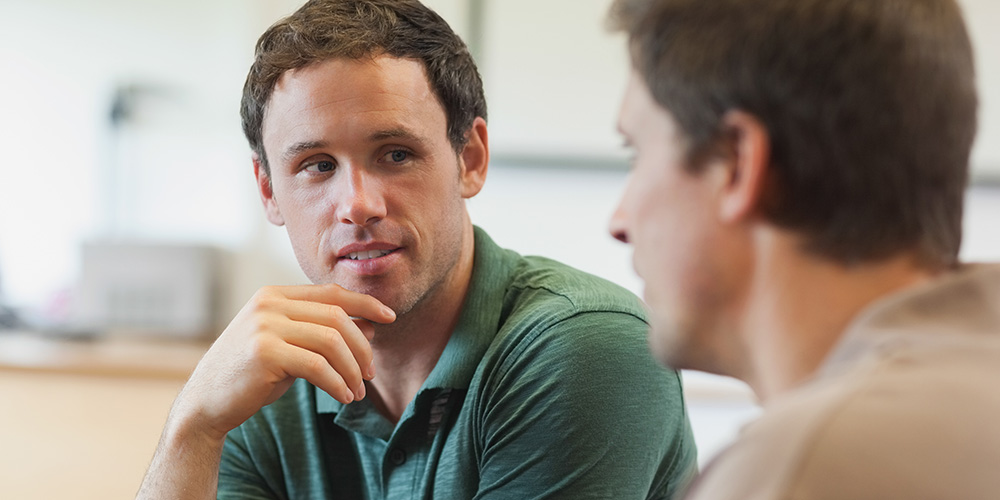Projects like DIAMOND need specific profiles and openness for new interdisciplinary research avenues
The Earth’s climate is changing faster than at any point in the history of modern civilization, unequivocally as a result of human activities. At the University of Basel, researchers are actively engaged in collecting evidence to better understand human decision making in this context and to provide a scientific basis for urgent, fair and sustainable actions. This is the case for Prof. Ulf Hahnel who investigates human judgment and decision making and the underlying psychological mechanisms in the context of global climate change and the energy transition.
The project DIAMOND just started on the 1st of December 2022 after being granted 3.8 Million EUR from the Horizon Europe EU programme and about 626 kCHF from the Swiss state Secretariat for Education, Research and Innovation (SERI) to finance your participation. Could you tell us more about this project and what will be your particular scientific contribution to it?
The basic idea of DIAMOND is to improve so called integrated assessment models which are used to inform policy makers around the world. They aim to model the future, positive alternatives or business-as-usual futures, and inform on how these different pathways impact levels of CO2 emissions and related increase in temperature. This analysis eventually provides insights into what has to be done in terms of climate policies. These models are complex but not perfect. One shortcoming from the perspective of psychological sciences is that these models rarely consider how humans actually make decisions. Humans, consumers, are often considered to be rational agents who invest for instance in technology when it is financially worth it. However from behavioural sciences research we know that different processes come into play. If we want to model the impact of climate policies but we do not take into account if people would accept these policies, or if we would like to model the acceptance by people of some kind of technology but we consider citizens as mere financially motivated rational consumers, predictions are likely to be wrong, implausible. Together with Prof. Rui Mata, an internationally renowned expert in cognitive and decision sciences from the University of Basel, this is exactly what we would like to improve, in order to provide an interface that allows to integrate human decision making data into these models and to allow modelling teams from around the world to better represent human behaviour. That’s the basic idea.
In the project, we plan to collect data from different countries on citizens’ preferences towards relevant consumer goods and energy technologies as well as on key climate policies and to integrate this data into the models. We might find out for example that 60% of the population would accept a particular policy and most precisely which group of people, as well. Based on this outcome, we could then suggest how these policies should be designed to be understood and taken up by the public.
Another challenging aspect of the project concerns how the models can be communicated, co-designed, how to involve citizens in the development of these policies. The overall trends are clear and scary, but these model outcomes, which have a certain level of uncertainty that differ depending on the tested assumptions, are often difficult for people to understand. And this is something we need to communicate to the public again. The DIAMOND project has dedicated work tasks to improve such co-design and communication, including other Swiss research groups such as the Transdisciplinary Lab of the ETHZ.
The consortium is composed of 19 partners bringing together classic modelling teams including researchers from natural sciences, environmental systems sciences, and engineering sciences from leading institutions such as EPFL, ETHZ, Imperial College, University College London or Oxford University. In addition to modelling teams, the consortium includes researchers from various behavioural and social sciences to develop modules and interfaces to improve these models. Our philosophy is thereby to work in a transparent and open science way. We aim to collaborate not only within the DIAMOND consortium but also beyond, to allow other research teams to freely use the project-generated data in order to jointly develop the next generation of integrated assessment models.
Could you tell us more on how you joined this consortium?
For this specific consortium, I was contacted by a former colleague, Georgios Xexakis, whom I knew from my time at the University of Geneva. Although we were working in different faculties, I was very curious about his work on climate modelling and how it would relate to my research on human judgment and decision making. We had the chance to collaborate in teaching which was very helpful. It was an opportunity for us to have extended and fruitful discussions across our disciplines and it further nourished my research interests to work on how we could improve energy and climate models.
Your research is truly interdisciplinary, how do you manage this in your team? Do you recruit researchers from various scientific background?
Yes, my team consists of PhDs from psychology, but also postdocs from marketing and soon civil engineering and I am very happy to have the opportunity to work with such an interdisciplinary group of talented researchers. Building up such a promising interdisciplinary team is of course a challenge. You need to actively recruit, it is a new field. Especially for projects like DIAMOND you need quite specific profiles and high openness for new interdisciplinary research avenues. But following interdisciplinary research approaches is not always easy and could be better incentivized, in my opinion. As a young researcher you need to publish in your very own discipline as well and working too interdisciplinary might be risky. In the future, I would very much appreciate to see more interdisciplinary centres with secured structured positions. My impression is that we are making progress here as interdisciplinarity is receiving more recognition, for instance from top-tier journals, as illustrated by the editorial entitled Come together and published in Nature Energy, for which the journal's editor in chief asked us to share our experiences in interdisciplinary research.
Would you recommend to young researchers to participate is such collaborative projects as project partners and what advice would you give them?
I would advise them not to be shy, to actively engage and contact potential collaborators directly. There is no need to wait for the next conference dinner. It’s important to be open and spread the word that you are interested in collaborations. I would also advise them to use their networks, already within the university, by checking who is involved in funded EU or SNSF collaborative research projects and whose research would be complementary to theirs and contact these potential collaborators.
Quite often I have to refuse an offer to join a consortium because it is not fully in line with my research or I lack the resources. But I can then recommend other researchers from the university. For that, I have to know who would be interested, also from other disciplines. That’s why motivated young researchers should not hesitate to spread the word and get on the screen of others. The University of Basel network Sustainable Future is a great facilitator of such exchange.
Of course, I wouldn’t recommend to accept any offer, just for the sake of being part of a collaborative consortium. The match with one’s own line of research and having the necessary resources are crucial aspects to consider. One needs to be aware that such calls are extremely competitive and thus chances for funding are usually small. The quality of the consortium matters, in particular the experience of the coordinator, both for funding and project success. Postdocs need 3 to 4 years’ perspective, some projects are shorter of course but this might be a way to get first funding, to become independent.
In my case, I received funding for a SNSF project as postdoc which allowed me to move into interdisciplinary research with Dr. David Parra from the environment sciences in Geneva and this was really a significant step forward to become independent. I got my own funding, own postdocs, independent publications. For this type of project funding the SNSF evaluates carefully how independent the applicant is. As far as I know, you needed at least 4 years of postdoctoral experience and at least one last author paper without the supervisor to apply for SNSF project funding. EU funded projects usually have less strict criteria for individual independence and thus are in this respect easier to join. So do not hesitate to go for it if you see a clear match with your research interest.
Thank you for sharing your experience with us! We wish you all the best for your current and future project participations. Let’s hope that the DIAMOND project, by joining forces, bringing the best modellers and an interdisciplinary team together will be able to increase awareness, and contribute to better communicated and cleverly designed climate actions.


